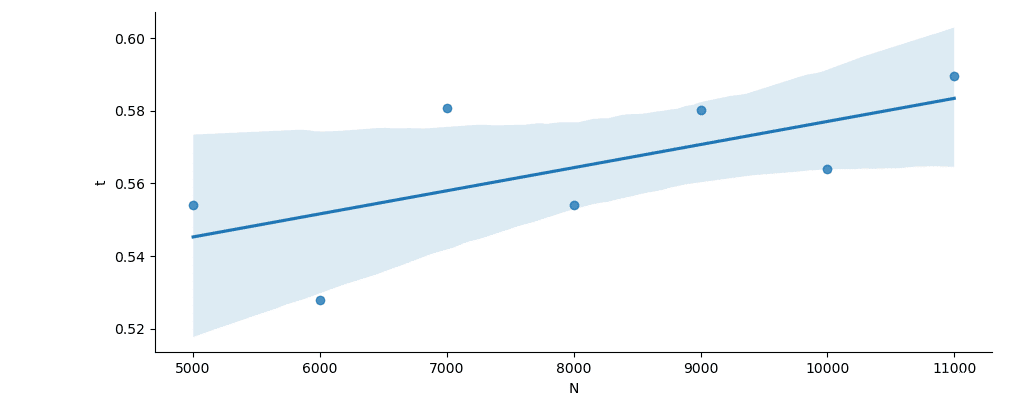所需工具:
Python
聪明的大脑文章源自灵鲨社区-https://www.0s52.com/bcjc/pythonjc/8840.html
勤劳的双手文章源自灵鲨社区-https://www.0s52.com/bcjc/pythonjc/8840.html
文章源自灵鲨社区-https://www.0s52.com/bcjc/pythonjc/8840.html
注意:本站只提供教程,不提供任何成品+工具+软件链接,仅限用于学习和研究。文章源自灵鲨社区-https://www.0s52.com/bcjc/pythonjc/8840.html
文章源自灵鲨社区-https://www.0s52.com/bcjc/pythonjc/8840.html
cupy我觉得可以理解为cuda for numpy,安装方式pip install cupy,假设文章源自灵鲨社区-https://www.0s52.com/bcjc/pythonjc/8840.html
[php]import numpy as np
import cupy as cp[/php]文章源自灵鲨社区-https://www.0s52.com/bcjc/pythonjc/8840.html
那么对于np.XXX一般可以直接替代为cp.XXX。文章源自灵鲨社区-https://www.0s52.com/bcjc/pythonjc/8840.html
其实numpy已经够快了,毕竟是C写的,每次运行的时候都会尽其所能地调用系统资源。为了验证这一点,我们可以用矩阵乘法来测试一下:在形式上通过多线程并发、多进程并行以及单线程的方式,来比较一下numpy的速度和对资源的调度情况,代码为文章源自灵鲨社区-https://www.0s52.com/bcjc/pythonjc/8840.html
[php]# th_pr_array.py
from threading import Thread
from multiprocessing import Process
from time import time as Now
import numpy as np
import sys文章源自灵鲨社区-https://www.0s52.com/bcjc/pythonjc/8840.html
N = 3000
def MatrixTest(n,name,t):
x = np.random.rand(n,n)
x = x@x
print(f"{name} @ {t} : {Now()-t}")
def thTest():
t = Now()
for i in range(5):
Thread(target=MatrixTest,args=[N,f'th{i}',t]).start()
def prTest():
t = Now()
for i in range(5):
Process(target=MatrixTest,args=[N,f'pr{i}',t]).start()
if __name__=="__main__":
if sys.argv[1]=="th":
thTest()
elif sys.argv[1]=="pr":
prTest()
else:
t = Now()
for i in range(5):
MatrixTest(N,"single",t)[/php]
运行结果为
[php](base) E:\Documents\00\1108>python th_pr_numpy.py th
th0 @ 1636357422.3703225 : 15.23965334892273
th1 @ 1636357422.3703225 : 17.726242780685425
th2 @ 1636357422.3703225 : 19.001763582229614
th3 @ 1636357422.3703225 : 19.06676197052002
th4 @ 1636357422.3703225 : 19.086761951446533
(base) E:\Documents\00\1108>python th_pr_numpy.py pr
pr3 @ 1636357462.4170427 : 4.031360864639282
pr0 @ 1636357462.4170427 : 4.55387806892395
pr1 @ 1636357462.4170427 : 4.590881824493408
pr4 @ 1636357462.4170427 : 4.674877643585205
pr2 @ 1636357462.4170427 : 4.702877759933472
(base) E:\Documents\00\1108>python th_pr_numpy.py single
single @ 1636357567.8899782 : 0.36359524726867676
single @ 1636357567.8899782 : 0.8137514591217041
single @ 1636357567.8899782 : 1.237830400466919
single @ 1636357567.8899782 : 1.683635950088501
single @ 1636357567.8899782 : 2.098794937133789[/php]
所以说在numpy中就别用python内置的并行和并发了,反而会称为累赘。而且这么一比更会印证numpy的强大性能。
但在cupy面前,这个速度会显得十分苍白,下面连续5次创建5000x5000的随机矩阵并进行矩阵乘法,
[php]#np_cp.py
import numpy as np
import cupy as cp
import sys
from time import time as Now
N = 5000
def testNp(t):
for i in range(5):
x = np.random.rand(N,N)
x = x@x
print(f"np:{Now()-t}")
def testCp(t):
for i in range(5):
x = cp.random.rand(N,N)
x = x@x
print(f"cp:{Now()-t}")
if __name__ == "__main__":
t = Now()
if sys.argv[1] == 'np':
testNp(t)
elif sys.argv[1]=='cp':
testCp(t)[/php]
最后的结果是
[php](base) E:\Documents\00\1108>python np_cp.py np
np:8.914457082748413
(base) E:\Documents\00\1108>python np_cp.py cp
cp:0.545649528503418[/php]
而且非常霸道的是,当矩阵维度从5000x5000升到15000x15000后,cupy的计算时间并没有什么变化,充其量是线性增长,毕竟只要缓存吃得下,无论多么大的矩阵,乘法数也无非是按行或者按列增加而已。



评论